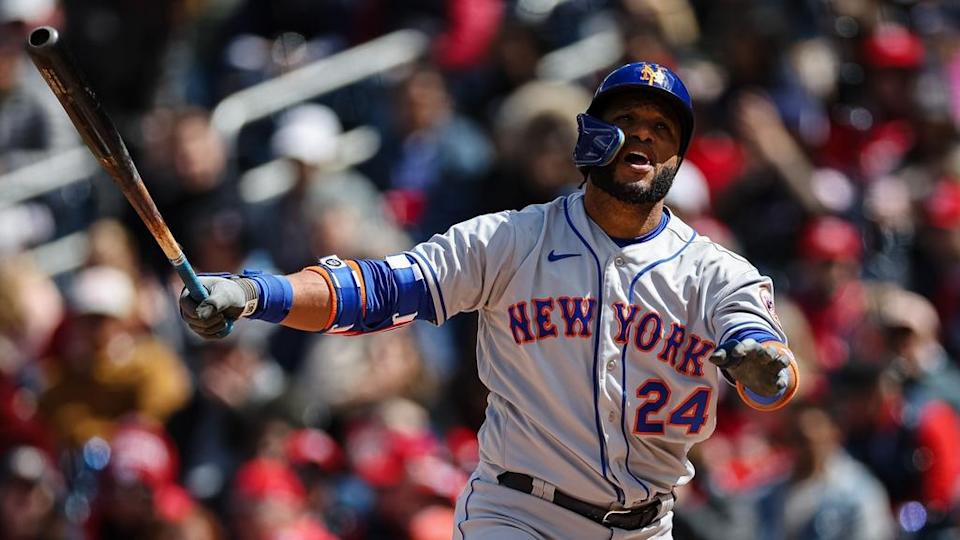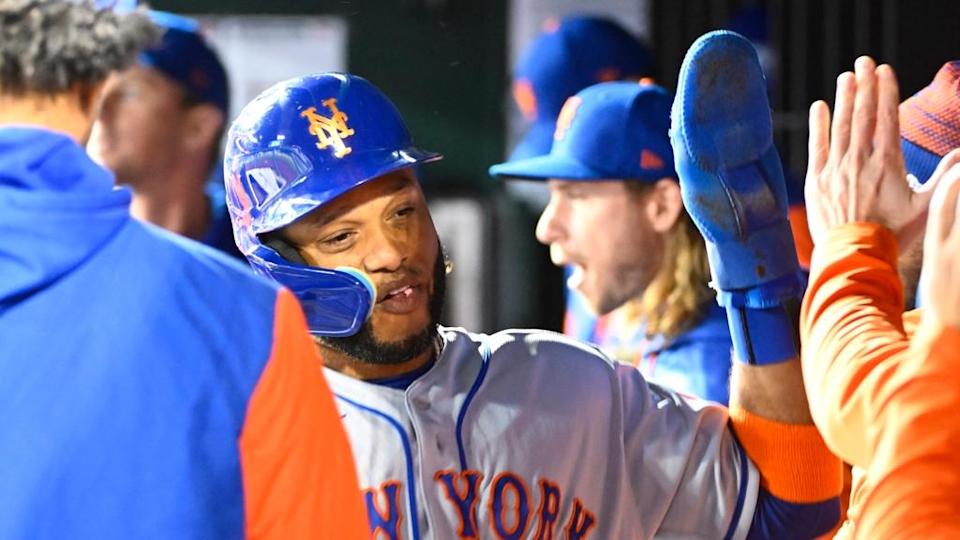
In the middle of the Mets‘ frenzied and spirited ninth inning comeback against the Cardinals on Monday in St. Louis was Robinson Cano, flying out softly to left field for the second out to cap an 0-for-4 night.
Before that flyout, Cano — who ended Monday hitting .184/.225/.263 with one extra-base hit in 40 plate appearances — grounded out to first, popped out to the pitcher, and grounded out to short.
In the grand scheme of things, it is still relatively early in the Mets’ season. But when it comes to the 39-year-old Cano, who is back after serving a one-year suspension in 2021 following his second positive PED test, it’s getting late.
It is not uncommon for players to struggle early before turning it on in May. And it’s true (fairly or not) that an early-season slump is often viewed as worse than one that happens in the middle of a season.
And Cano looking this way early on does not necessarily mean he’ll never again resemble the hitter whose sweet swing translated to success as recently as 2020, when he slashed .316/.352/.554 in 49 games during the shortened season. But it’s fair to wonder how much of Cano’s performance in 2020 was aided by PEDs.
It’s also fair to wonder how much longer the Mets should continue to give Cano — who has curiously been hitting sixth, ahead of very productive hitters Mark Canha and Jeff McNeil — regular at-bats
It can be argued that Cano’s regular playing time, at least for now, should be taken away immediately. A team with championship aspirations has to be proactive.
This has not been a case of early-season bad luck for Cano.
He has looked mostly lost at the plate, constantly behind in the count, his bat looking slow, flailing at pitches way out of the zone, and hardly ever driving the ball.
And the advanced numbers paint a bleak picture.


Cano’s line drive rate is 13.8 percent, down from 29.7 percent in 2020 (his career line drive rate is 23.7 percent).
Looking at Baseball Savant, Cano’s xwOBA is in the 17th percentile, his average exit velocity is in the 12th percentile, and his chase rate (in the second percentile) is among the very worst in baseball. Also well below average are his xBA, xSLG, and walk rate. He is below average when it comes to barrel percentage, strikeout rate, and whiff percentage. He is slightly above average in hard hit rate, but his other metrics are so poor that they’re dragging him down to an unplayable level.
Just two of Cano’s seven hits this season have reached the outfield, and all but one (an infield hit to second base) have been hit the other way. He simply hasn’t been getting around on pitches.
And that slow bat we talked about earlier? It’s not a mirage.
Cano is hitting .400 against offspeed pitches, but just .176 against fastballs and .133 against breaking balls.
If Cano did other things well, perhaps it would make sense for the Mets to continue giving him regular playing time with the hope that he breaks out at the plate.
But at this point in his career, Cano’s range at second base is severely diminished. He is in the sixth percentile when it comes to OAA (Outs Above Average), and his sprint speed is in the third percentile.


Additionally, if the Mets didn’t have other options to use regularly at DH instead of Cano, trotting him out there for a bit longer could be viewed as sensible. But the Mets have Dominic Smith and J.D. Davis, who deserve to be given a chance to earn more regular playing time and who should be in the lineup over Cano.
The elephant in the room here is of course Cano’s salary, with him earning $20 million from the Mets this season and another $20 million in 2023.
Barring a third positive PED test or a buyout that’s worked out between Cano and the Mets, they will be on the hook for that money. But at what point does accepting it as a sunk cost make sense?
Does it make more sense for the Mets to keep using Cano regularly because of his high salary, dealing with substandard results for the sake of it? Or does it make more sense for them to bench him in spite of that high salary? It is clearly the latter.
Again, this is not a call for the Mets to release Cano at this point. And it would be a bit of a shock if they did.
Rather, this is a call for the Mets to understand — at least for now — that other players should be in the lineup over Cano, who would be on the bench instead of in the starting nine. From there, he can continue to be a leader, and perhaps take on a bigger on-field role again at some point down the road.
